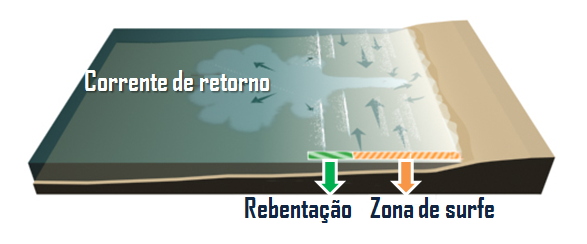Accelerating Ice Sheet Melt Is Raising Sea Levels, Says New Study Accurately Reported By Wall Street Journal
 |
| Sea level rise last century versus the last two decades via Jet Propulsion Lab. |
Is it big news that “Rising Sea Level Tied to Faster Melt,” as the Wall Street Journalreported today?
Back in 2011, JPL researchers concluded that polar ice sheet mass loss is speeding up, threatening a 1 foot sea level rise by 2050. Last year, the most comprehensive analysis of all observational data found that Greenland ice sheet melt is up nearly five-fold since mid-1990s.
Back in 2011, JPL researchers concluded that polar ice sheet mass loss is speeding up, threatening a 1 foot sea level rise by 2050. Last year, the most comprehensive analysis of all observational data found that Greenland ice sheet melt is up nearly five-fold since mid-1990s.
 |
| Changes in global sea level due to ice sheet melting since 1992. Credit: NASA via NBC. |
But I think it qualifies as news when the Wall Street Journal actually does an original piece on one of the more worrisome threats from global warming — and gets it right.
Indeed the Wall Street Journal reporters and editorial page editors are kind of like Edward Norton and Brad Pitt (respectively) in Fight Club (spoiler alert) raging a schizophrenic war with one another (literally). The WSJ editors set the first rule of global warming fight club — don’t talk about the threat of manmade global warming (see Not The Onion: Wall Street Journal Hits ‘Rock Bottom’ With Inane Op-Ed Urging ‘More Atmospheric Carbon Dioxide’)
The more sane half of the WSJ reported on a new study in Nature Geoscience, whose abstract explains:
Indeed the Wall Street Journal reporters and editorial page editors are kind of like Edward Norton and Brad Pitt (respectively) in Fight Club (spoiler alert) raging a schizophrenic war with one another (literally). The WSJ editors set the first rule of global warming fight club — don’t talk about the threat of manmade global warming (see Not The Onion: Wall Street Journal Hits ‘Rock Bottom’ With Inane Op-Ed Urging ‘More Atmospheric Carbon Dioxide’)
The more sane half of the WSJ reported on a new study in Nature Geoscience, whose abstract explains:
… we conclude that most of the change in ocean mass is caused by the melting of polar ice sheets and mountain glaciers. This contribution of ice melt is larger than previous estimates, but agrees with reports of accelerated ice melt in recent years.
Here is how a rogue reporter at the WSJ covered it:
Accelerated melting of polar ice sheets and mountain glaciers was the driving factor behind a rise in the global sea level of 16.8 millimeters, or about two-thirds of an inch, between 2005 and 2011, according to a study published Sunday in Nature Geoscience.
The findings are consistent with observed longer-term trends, but the study encompasses only a few years of observations, limiting its conclusions, scientists said. The study, funded by the National Science Foundation and the National Aeronautics and Space Administration, does resolve long-standing discrepancies that arose from different methods of measuring sea levels.
Scientists want to establish how much of the sea-level change relates to increased melt water, and how much relates to the water expanding as it warms up. Previous calculations indicated that melting might contribute about half of the increase. The latest study concludes that for the period 2005-2011 the contribution was closer to 75%.
“There was an increase in the melting rate in Greenland starting in 2005 and that is probably the underlying story why” a larger quantity of melt water has poured into the oceans in recent years, said Clark R. Wilson, geophysicist at the University of Texas at Austin and co-author of the study.
Can’t argue with any of that — unless, of course, you are a denier writing for the WSJ who sees only benefits from more carbon pollution.
By the way, you may have noticed that seas only rose about 2.4 millimeters a year from 2005 to 2011. The study picked an endpoint that corresponds to a dip in sea level rise that NASA explained in late 2011 (see “It Rained So Hard the Oceans Fell“).
The short-term dip certainly drew the attention of the climate science deniers, who said absurd things like “The fact that CO2 levels have been higher in the last 5 years that have the lowest rate of rise than the years with lower CO2 levels is a strong indicator that the claims of CO2 are grossly exaggerated.”
Needless to say, the dramatic rebound in sea level rise has not gotten similar attention. See
Has The Rate Of Sea Level Rise Tripled Since 2011?”
By the way, you may have noticed that seas only rose about 2.4 millimeters a year from 2005 to 2011. The study picked an endpoint that corresponds to a dip in sea level rise that NASA explained in late 2011 (see “It Rained So Hard the Oceans Fell“).
The short-term dip certainly drew the attention of the climate science deniers, who said absurd things like “The fact that CO2 levels have been higher in the last 5 years that have the lowest rate of rise than the years with lower CO2 levels is a strong indicator that the claims of CO2 are grossly exaggerated.”
Needless to say, the dramatic rebound in sea level rise has not gotten similar attention. See
Has The Rate Of Sea Level Rise Tripled Since 2011?”
http://thinkprogress.org
Related Post:
Wall Street Journal: “More Droughts, Floods, Extreme Weather Expected With Warming Climate”


Comentários
Postar um comentário